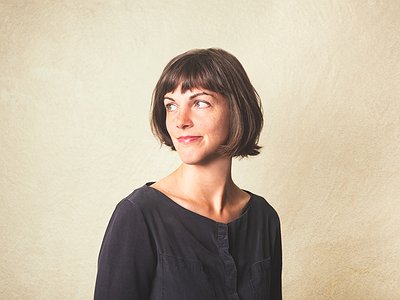Part 2
Take us through a day in your life, from a possible morning routine through to your work, please. Do you have a fixed schedule? How do music and other aspects of your life feed back into each other - do you separate them or instead try to make them blend seamlessly?
My schedule is actually changing a lot right now. I have a residency at Cité International des Arts in Paris and just beginning rehearsals for an experimental sound theater production, Extensions, with ox&öl in Zurich. While I am moving back and forth between countries and languages quite a bit, I try to keep some things constant.
What works best for me is to start the day with creative work before looking at my phone or checking emails. The morning is my most precious time of day for creative work and attention. In the afternoon, I answer emails, teach, and have meetings. Then in the evening, I do work like notating or editing.
Can you talk about a breakthrough work, event or performance in your career? Why does it feel special to you? When, why and how did you start working on it, what were some of the motivations and ideas behind it?
At That Time was a very meaningful work for me. It brought some new challenges: using an existing text by an established writer (Gertrude Stein), working with a video director (Heinrich Horwitz) for the first time, and long-distance collaborating, rehearsing, and recording with Decoder.
I wrote the piece during the covid-19 lockdown, when so many things were being closed and cancelled. I was really worried the piece was never going to happen, but I kept writing anyway. I composed in a sensory way, singing the text and playing the harmonium, seeing what felt right. Then I figured out how to notate it in a way that gave freedom and structure at the same time.
I was motivated to tell the story of these women, Gertrude Stein and Alice Toklas, who loved each other so much, but who had such a power difference in their relationships. I was so interested in how their stories overlapped and intertwined. It felt like a story of different parts of myself.
There are many descriptions of the ideal state of mind for being creative. What is it like for you? What supports this ideal state of mind and what are distractions? Are there strategies to enter into this state more easily?
Being creative is a focused state of imagination, commitment, and problem-solving. It works best when my mind is clear (usually in the morning). I am most effective before I tune into texts and emails, whether from friends or professional obligations. It helps if I create a barrier with time and say, I’m going to focus on this for ____ duration. Similar to when I meditate, I make a list of what comes to mind so that I can let go and handle it later.
Music and sounds can heal, but they can also hurt. Do you personally have experiences with either or both of these? Where do you personally see the biggest need and potential for music as a tool for healing?
I recently led a series of music technology workshops for Bay Area residents experiencing housing or job insecurities. During the workshop, we explored improvising, recording and editing audio, and creating a piece to share in a final public concert. I was fortunate to work with a grant from the American Composers Forum and provide all the necessary equipment with. The experience was a huge reminder that making music can be a healing and community-building activity—and that resources like time, space, and equipment are not always available for folks to be creative.
As a vehicle for self-expression, sound is very powerful—but also as a material, the vibrations are physically affecting. One of the most interesting classes I took at Mills College was “Music and Conflict,” taught by Nalini Ghuman. Learning how sound was used as warfare in WWII was a stunning example of how powerful it is, and how important it is to be intentional about our sonic environments.
There is a fine line between cultural exchange and appropriation. What are your thoughts on the limits of copying, using cultural signs and symbols and the cultural/social/gender specificity of art?
Amplify voices, don’t speak for others.
Our sense of hearing shares intriguing connections to other senses. From your experience, what are some of the most inspiring overlaps between different senses - and what do they tell us about the way our senses work?
I explore sensory cross-modality in my work, the ways in which what we see impacts what we hear, and vice versa. Lawrence Marks’ work is a great illustration. He did several studies with flashes of light paired with beeps and found that brightness was perceived as louder, dimness as softer. He found an accelerating light to make a sound seem faster, and a decelerating light to make sound seem slower. I compose with both visual and sonic elements because they so deeply affect one another.
Art can be a purpose in its own right, but it can also directly feed back into everyday life, take on a social and political role and lead to more engagement. Can you describe your approach to art and being an artist?
At its best, being creative means engaging with the world in a dynamic and curious way. This is not limited to an artistic discipline. I try to approach both my work and life with a sense of wonder and appreciation for the newness of each experience. This means fully engaging with the even the messiest issues and approaching them authentically and creatively.
What can music express about life and death which words alone may not?
The existential issues of life and death invite a silent witnessing. Because sound is nonverbal, it does the same and teaches us to be more present with these experiences.





